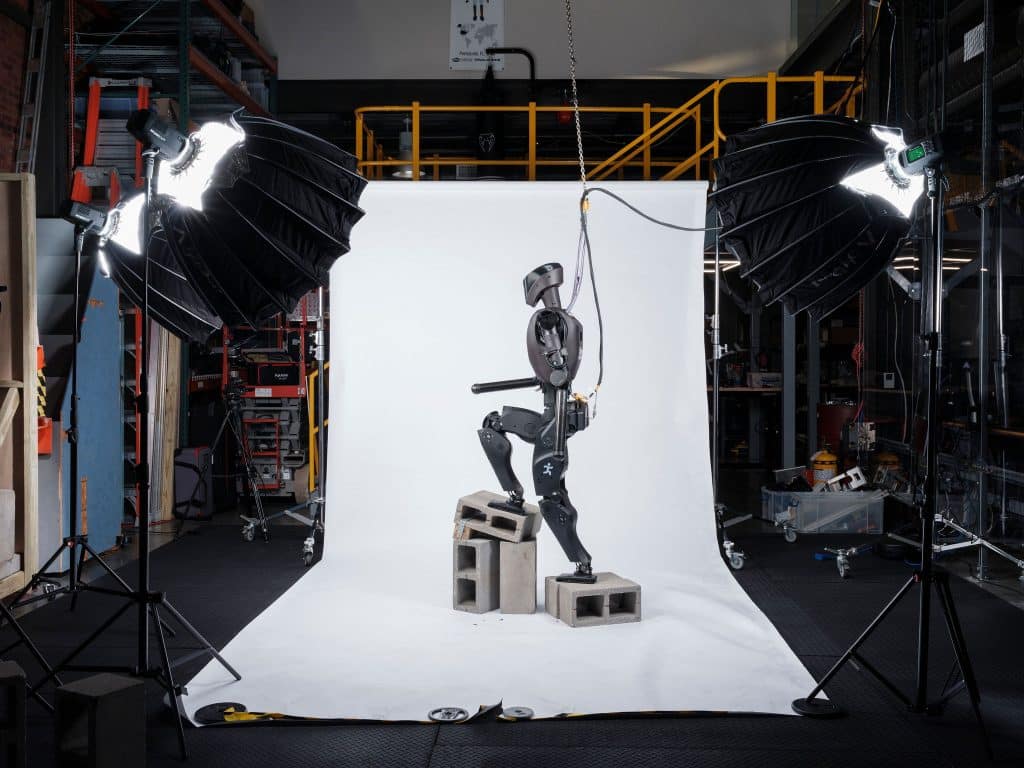Meet Alex, IHMC’s next generation humanoid robot
Alex is going out into the world.
The Florida Institute for Human and Machine Cognition’s newly developed robot is the latest chapter in IHMC’s long history of excellence and innovation in the field of humanoid robotics. It takes the lessons of years of work on integrated controls and behaviors as well as in-house hardware design to prioritize out-of-the-lab testing and experimentation.
Alex is a multi-year, multimillion dollar project funded through the Office of Naval Research (ONR). It builds upon the design work the Robotics team did on Nadia, a humanoid that advanced the genre — and gained YouTube notoriety playing ping pong and boxing.
Nadia’s proficiency with behavior, decision-making, push-recovery and more in the lab informed the team’s work moving forward. Nadia was a rich testbed not only for the structural specifications of the humanoid — from joints to actuators — but also for the software that drives behavior capabilities, perception sensing, virtual reality teleoperation, and more.
Senior Research Scientist Dr. Robert Griffin leads the Alex team. Their work is featured in the latest edition of IHMC’s newsletter, available now.
“The idea is to really start pushing the robot to go outside of the lab and develop it into a system that we can take places and test what we’ve developed.” Griffin says.
The research goals enabled by the ONR funding include design and integration of next-generation controllers for outdoor urban operations, enhanced design of behaviors for building exploration, integration of a behavior cloning pipeline, and improved simulation environment.
 The goal is for Alex and its successors to be hardy and nimble enough ultimately to operate in extreme environments where the risk to human responders is high, from military scenarios to disaster response.
The goal is for Alex and its successors to be hardy and nimble enough ultimately to operate in extreme environments where the risk to human responders is high, from military scenarios to disaster response.
A key innovation in Alex is the high-powered custom actuators, which significantly drop the humanoid’s weight compared to Nadia, which weighed about 100 kilograms. The estimate is that Alex will weigh 85 kilograms with a battery.
“Long-term, we think we can make the body itself a lot lighter, allowing us to really focus on high speed and performance,” Griffin says.
The capabilities that allow humanoids like Alex to act as deeply integrated team members in a squad also could translate to other scenarios. Maneuverability, durability, autonomy and search skills can allow Alex to serve as a human avatar first-responder in disaster situations, keeping emergency personnel in relative safety.
“We think Alex will help advance the abilities of humanoids and their speed of operation, with the goal of achieving human-level speeds so that robots can keep up with the tempo of real-world operations,” Griffin says.
Latest News
- IHMC partners with Conduit Venture Labs to accelerate commercialization efforts
- Research platforms aim to better support military personnel in high-stress environments
- Study for U.S. Air Force Research Lab tracks impact of ketones on pilot ventilation
- National Institute on Aging funded study tracks changes to gait as we age
- Meet Alex, IHMC’s next generation humanoid robot
- Decades of AI-expertise fuel growth of National Center for Collaborative Autonomy
- Entrepreneurs, researchers find opportunity at Northwest Florida Pitch Day
- IHMC honored by Humanoid Robotics Technology as Outstanding Research Organization
- STEM-Talk: Marina Walther-Antonio on the microbiome and gynecologic cancers

